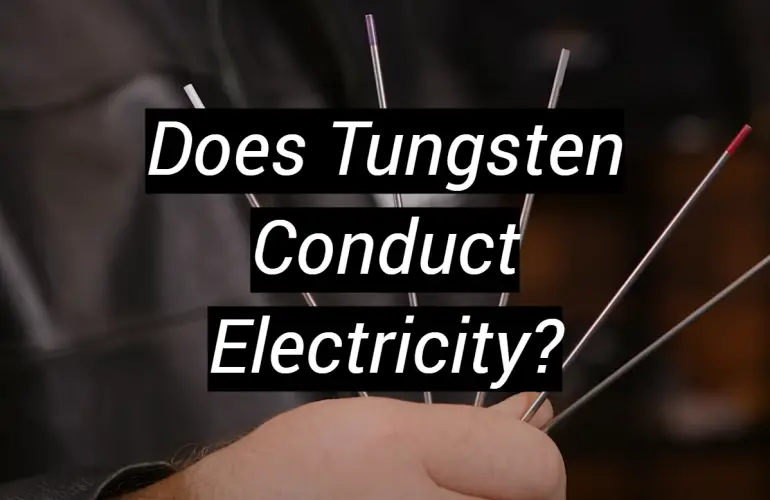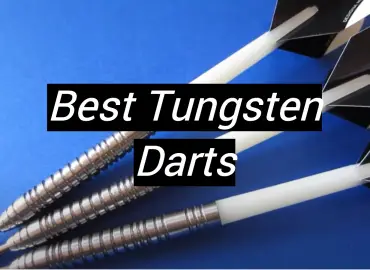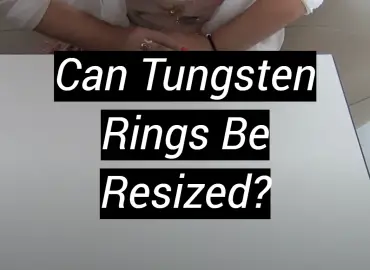If you have ever wondered if tungsten conducts electricity, you are not alone. This is a question that many people ask, and the answer is not always straightforward. This article will explore the answer to this question and discuss how tungsten behaves with electricity. It will also talk about some of the applications of tungsten in electricity and how it is used in electrical devices. By the end of this post, you will have a better understanding of whether or not tungsten conducts electricity!
Properties of Tungsten
Non-reactive metal
Tungsten is a non-reactive metal. This means that it won’t react with the environment, making it ideal for use in applications where corrosion or oxidization could be an issue.
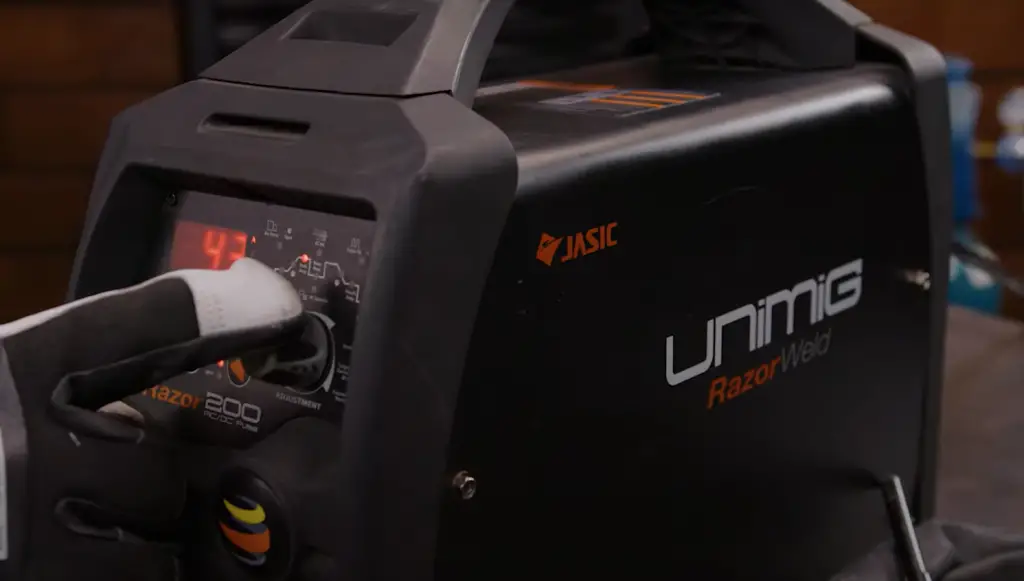
It also doesn’t contain any poisonous substances and it has high-temperature resistance, making it perfect for high-temperature applications such as furnace components, metalworking tools, and electrodes.
High Strong and Durable
Tungsten has very high strength and durability which makes it perfect for a variety of industrial applications. Its melting point is extremely high at 6170°F (3410°C), which makes it highly resistant to extreme temperatures and pressures. Additionally, its density is 19.25 g/cm3 – much higher than other metals, making it ideal for applications that require a lot of strength.
Hard
Tungsten is one of the hardest metals on the market, making it ideal for cutting tools and other applications that need to be able to stand up to wear and tear.
Heat Conductive
Tungsten has excellent heat conductivity, making it perfect for use in furnaces and other high-temperature applications. Its thermal conductivity is higher than that of steel or iron, which makes it superior at transferring heat from one source to another quickly and efficiently. This makes tungsten an ideal choice for a variety of industrial purposes.
Malleable
Tungsten is malleable, meaning it can be shaped and formed into whatever shape you need. This makes it a great choice for applications where intricate shapes or precision machining is required. It also allows designers to create unique shapes with minimal effort.
Dissolves in a mixture of acids
Tungsten is soluble in hydrochloric acid, sulfuric acid, and other acids. This means it can be used to create alloys and admixtures with different properties. Additionally, this solubility makes tungsten a great choice for use in etching processes and as an additive in coatings due to its ability to dissolve into the chemical mixture.
Can combine with halogens
Tungsten can combine with other substances, such as halogens.
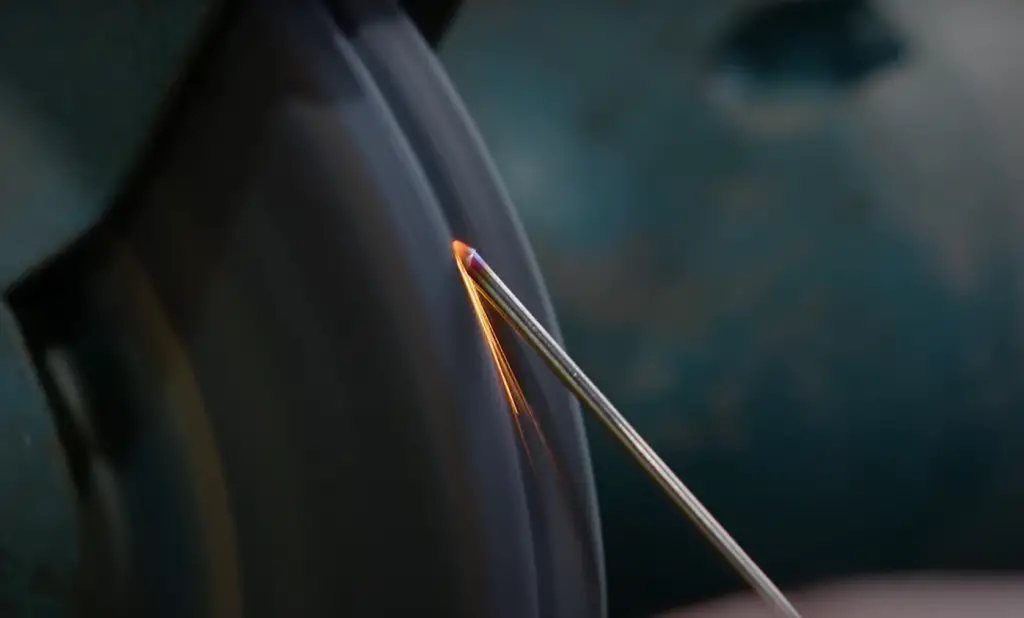
This makes it a great choice for making alloys and for use in composite materials. Additionally, this combination helps to improve the properties of tungsten when it is used in applications that require strength and durability [1].
Uses of Tungsten
Manufacturing of alloys
Tungsten is used to manufacture alloys such as tungsten-carbide, which is extremely hard and resistant to wear and tear. This alloy is used in parts for machine tools, drills, saw blades, and automotive parts.
Manufacture of electronic components
Tungsten is used in the manufacture of electronic components such as vacuum tubes, filament lamps, cathode ray tubes, and ballasts. Tungsten electrodes are used for arc welding and plasma cutting. Additionally, tungsten compounds are used in the manufacture of flat-panel displays, including LCDs.
Jewelry
Tungsten is chemically inert and scratch resistant, making it an ideal choice for jewelry applications. Tungsten rings are popular with couples who want a durable ring that will last a lifetime. Additionally, tungsten is becoming increasingly popular in the manufacture of watches and other accessories.
Medical applications
Tungsten is used in medical imaging equipment such as computed tomography (CT) scanners due to its high density and ability to absorb X-rays. Additionally, tungsten alloys are used in pacemakers and other cardiovascular devices, due to their biocompatibility. Tungsten compounds have also been used in radiotherapy treatments.
Tungsten compounds
Tungsten compounds are used as catalysts in chemical reactions, and as pigments to give paints and dyes their color. Tungsten is also used to make special glasses with high refractive indices, which are useful for optical applications such as eyeglasses or camera lenses. Additionally, tungsten has been used to make superconductors at near absolute-zero temperatures.
Fabrication
Tungsten can be fabricated into various shapes including rods, wires, foils, and sheets that are used in many industries. It is also used to make tungsten carbide tools for metalworking applications such as drilling and milling. Additionally, it is used to make small electrical wires for use in computers and other electronic equipment.
Aerospace applications
Tungsten is used in aerospace applications due to its high melting point and low density.
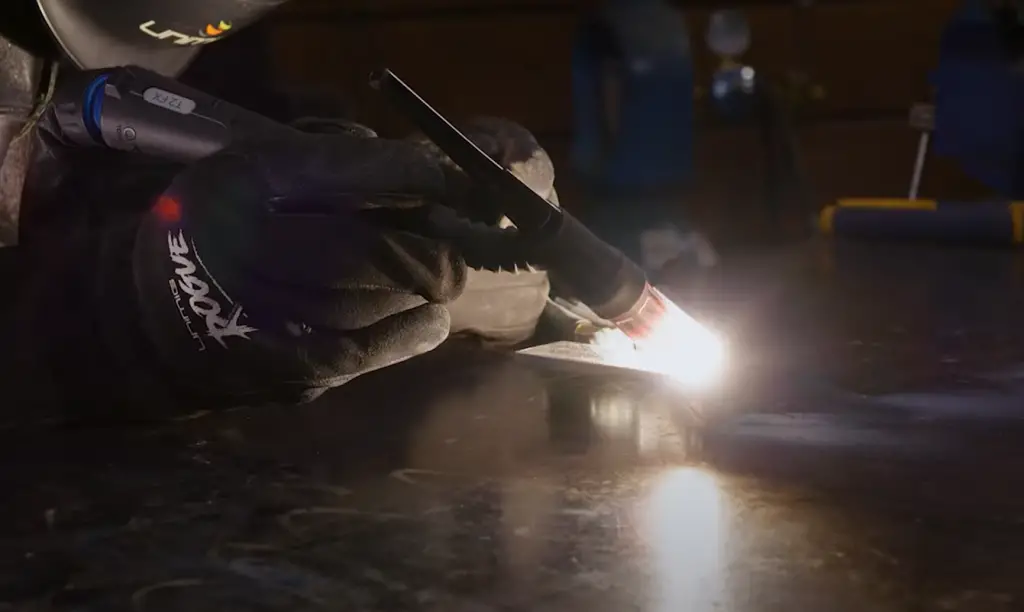
Tungsten alloys are used as structural components of aircraft engines, including turbine blades and vanes. Additionally, tungsten compounds are also used in rocket motors and missile guidance systems.
Other uses
Tungsten has many other uses such as golf club heads, darts, fishing weights, darts barrels, bowling ball cores, jewelry boxes, eyewear frames, pipe supports, and more. It is also an essential nutrient for plant growth and development. As a result, tungsten-containing fertilizers are being used to improve crop yields [2].
Environmental Impact
Tungsten mining, processing, and refining can have negative environmental impacts. These include air pollution, water pollution, and soil contamination due to the release of dust particles, heavy metals, and other toxins into the environment. Additionally, tungsten has been linked to occupational health issues such as skin, eye, and lung irritation caused by exposure to dust particles and toxic fumes. To minimize these impacts, many countries have implemented rigorous regulations on tungsten extraction and use. Furthermore, companies involved in tungsten production should adhere to best practices for protecting the environment during their operations. This includes disposing of waste products properly and providing protective equipment for workers.
What is electrical conductivity?
Electrical conductivity is the measure of a material’s ability to conduct electricity. It is determined by the amount and type of electrical charge carriers that are present in a material. Generally, materials with more free electrons will have higher conductivity than those with fewer. Electrical conductivity can be affected by various factors such as temperature, pressure, composition, grain size, and impurities.
At low temperatures, most materials will become less electrically conducting due to increased resistance of electron flow. On the other hand, at high temperatures, some materials such as metals can lose their electrical resistivity completely due to thermal excitation which generates free electrons and increases their mobility.
Electrical conductivity has many practical applications including electronics, wiring, communications systems, and engineering projects. It is also important for understanding the behavior of materials in various situations and conditions. Conductivity measurements are essential for quality control, production optimization, product safety, and environmental impact assessment. Therefore, it is a highly used parameter in many industries.
Precision measurement techniques such as four-point probe methodologies provide great accuracy when measuring the electrical conductivity of materials. This allows engineers to ensure that the material they are using meets their specifications and will perform reliably over time. As technology advances, electrical conductivity testing becomes more important to understand how materials interact with each other and in different environments. With this knowledge, engineers can improve performance and reliability while reducing costs related to failures or defects caused by incorrect material selection or design choices [3].
Why and how does tungsten conduct electricity?
Tungsten is a metal that is naturally electrically conductive. It has the highest melting point of all metals and high electrical conductivity, making it an ideal material for many electrical applications.
At the atomic level, tungsten’s electron orbitals are full and therefore able to easily accept electrons from other atoms. This makes it a good conductor as electrons can flow freely between atoms, allowing electricity to flow through the metal. Additionally, tungsten’s low resistivity helps reduce energy losses in circuits and electric components due to its ability to allow electricity to pass through with little resistance.
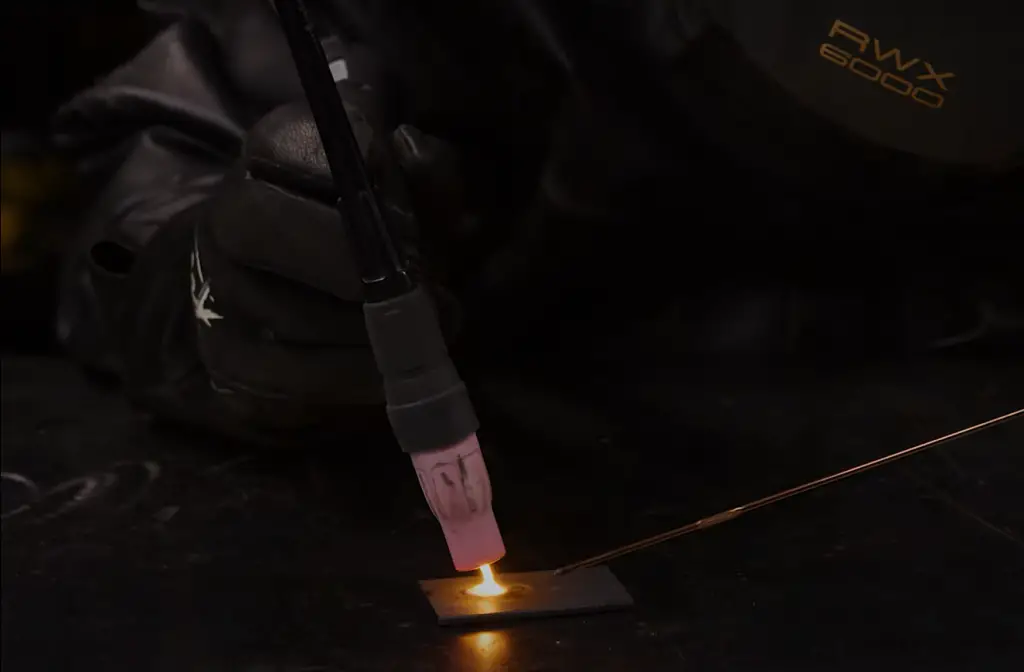
The structure of tungsten also contributes to its excellent properties as a conductor of electricity. Its crystalline structure is held together by strong covalent bonds, which allow electricity to pass through relatively easily and quickly. This accounts for its high electrical conductivity and makes tungsten an ideal material for use in electric circuits.
In summary, tungsten is a highly efficient conductor of electricity due to its full electron orbitals, low resistivity, and strong crystalline structure. Therefore it is used in many electrical applications such as light bulbs, electronics, heating elements, and more [4].
FAQ
Is tungsten a good conductor of electricity?
Yes, tungsten is an excellent conductor of electricity. It has a high electric resistance and low thermal conductivity, making it one of the best materials for electrical applications. Tungsten also has a very high melting point, which makes it ideal for use in applications that require extreme heat and temperature stability. The ability to form alloys with other metals also gives tungsten an advantage when used in electrical components. Additionally, its corrosion-resistant properties make tungsten a great choice for long-term electrical projects. All of these qualities make tungsten an invaluable material for any number of different industries and applications.
What are the advantages of using tungsten?
Tungsten has many advantages over other metals and materials. It has a high melting point, excellent electrical conductivity, relatively low thermal conductivity, good resistance to corrosion and wear, and the ability to form alloys with other metals. Tungsten is also very dense, which makes it ideal for applications that require weight reduction. Furthermore, it is highly machinable and can be formed into intricate shapes without becoming brittle or cracking. These qualities make tungsten an ideal choice for many different industries and applications.
What are some common uses of tungsten?
Tungsten is commonly used in electrical components such as resistors and switches due to its excellent electrical properties. It is also used in x-ray tubes because of its ability to withstand high temperatures and radiation. In addition, tungsten is used in the aerospace and automotive industries for parts that require extreme heat and weight reduction. It is also commonly used in jewelry and various manufacturing processes due to its durability and strength. Finally, tungsten is often used as an alloying agent in other metals such as steel to give them better properties.
Can you get shocked with tungsten?
Tungsten is an excellent conductor of electricity, so it is possible to get shocked with tungsten if the electrical current is great enough. However, due to its high resistance and low thermal conductivity, it is much less likely that you would get shocked than with other metals.
What precautions should be taken while working with tungsten?
When working with tungsten, it is important to take proper safety measures to avoid serious injury or death. Wear protective clothing and eye protection whenever possible and make sure that all electrical components are properly grounded before starting any project. Additionally, use caution when handling sharp objects made of tungsten, as they could cause serious harm if mishandled. Finally, make sure to follow all safety instructions provided by the manufacturer when using tungsten or any other electrical components to ensure proper operation and avoid accidents.
Are there any health hazards associated with working with tungsten?
Tungsten is generally considered safe for use in most applications, however, prolonged exposure to high levels of tungsten dust can be hazardous and should be avoided if possible. Inhaling large amounts of tungsten dust can lead to irritation of the respiratory system and skin rashes. Therefore, it is important to wear protective clothing and respirators when handling materials containing tungsten or products made from tungsten. Additionally, it is best to keep any tungsten dust away from food and drinks to avoid potential contamination. If you are concerned about your health, consult a doctor for further advice.
Useful Video: Electronics: Is tungsten a good conductor of electricity?
Conclusion
So, does tungsten conduct electricity? The answer is yes, tungsten does conduct electricity. It has a high electrical conductivity and can be used in many applications. This makes it an ideal metal for use in circuits and in electrical equipment. Its unique properties make it highly desirable for its resistance to corrosion, heat, and other elements that could degrade the performance of other materials. Tungsten provides a strong, reliable connection for any circuit or wiring application. With its outstanding qualities, tungsten proves to be a valuable metal that should not be overlooked when selecting materials for electrical projects.
References:
- https://eartheclipse.com/science/misc/is-tungsten-conductive.html
- https://techiescientist.com/uses-of-tungsten/
- https://energyeducation.ca/encyclopedia/Electrical_conductivity
- https://lambdageeks.com/does-tungsten-conduct-electricity/

